The E-Maxx Bar (aka “the SuperQuake”) is a member of Bandbell’s Bamboo Bar family of bars – a line of hand-made specialty barbells designed around the principle of Oscillating Kinetic Energy (OKE). The SuperQuake has the same hardened ash & composite resin shaft as the original Bamboo and Earthquake Bar, but because it’s over 6″ longer and has 33% more band capacity, the SuperQuake allows for more weight and has greater kinetic energy potential.
What’s the point of training with Oscillating Kinetic Energy? Well originally it was rehab, but it turns out that it’s just as useful for injury prevention and strength training as it is for rehabilitation. I’ll explain…
Using a Bamboo Bar instead of a steel bar for linear movements like the bench press or squat changes the lift. A flexible bar with weights suspended by flexible resistance bands becomes erratic (the weights have multiple degrees of freedom), and you as the lifter have to manage this chaos throughout the lift. No longer is it a matter of just moving the bar up and down, you now have to control it in three-dimensional space as well. Doing so requires the full recruitment of the generally underutilized stabilizer muscles.
Controlling the SuperQuake (or its cousins) is definitely a challenge at first; whether you’re injured or not – but the rewards are many. These include greater strength (both for the primary movers and the stabilizers), better form, improved joint health, increased blood flow, and better coordination/motor control. OKE training also greatly reduces your susceptibility to further injury.
Origin of the Bamboo Bars
Bandbell Bamboo Bars are the brainchild of Jim Seitzer; a national-level bodybuilder and elite powerlifter with over 35-years of lifting experience. He has an anatomy and exercise physiology degree from Ohio State University, has won 12 physique titles including Mr USA, and he’s even one of the original founding members of Westside Barbell (training alongside Louie Simmons.) Jim is about as familiar with the strength training world as anyone could ever hope to be, which means he is also all-too-familiar with training injuries.
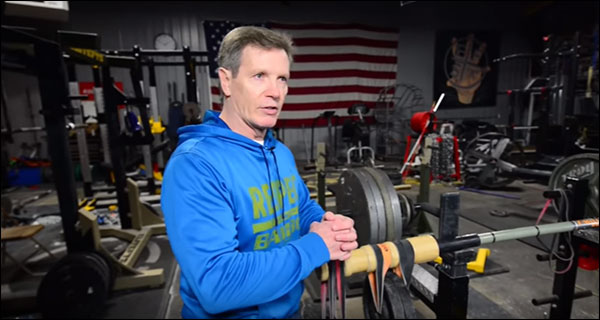
The original Bamboo Bar came to be because of Jim’s own shoulder injury. As the story goes, he was dealing with constant rotator inflammation and was unable to bench even an unloaded steel bar without pain. As a last ditch effort to bench something before having to go under the knife for shoulder surgery, Jim started messing around with a broomstick. He used resistance bands to hang kettlebells from the broomstick and discovered that he was able to press as much as 50-pounds without pain (two 25-pound kettlebells.)
Now 50-pounds sure doesn’t sound like a lot of weight, but simply finding a way to complete the movement without the pain meant that the process of restrengthening and rebuilding the damaged rotator could begin. That 50-pounds becomes 60-pounds; 60-pounds becomes 70-pounds, and so on. As you probably already figured out, this broomstick discovery led to the creation of the first Bamboo Bar.
How’s that work?
Are you wondering why 45-pounds of steel causes pain, but 50-pounds of broomstick and swinging kettlebells does not?
As I touched on in the intro, hanging weights from a flexible bar like the Bamboo bars (or a broomstick in this case) adds a whole new dynamic to the lift – oscillation. What was once a linear exercise with the steel bar (up-down-up-down) becomes a truly dynamic exercise. Single-path lifts are now three-dimensional, requiring more than the primary movers and a mediocre sense of balance to steady the barbell and complete reps. With a Bamboo bar, full activation of the stabilizer muscles** is required.
It’s these stabilizers that makes the lift less painful. Their full activation tightens up and properly aligns the joint – putting everything where it should be. This takes pressure off the damaged connective tissue, thus improving the mechanics of the movement. This is what you need to start your rehabilitation. It’s not magic, but it is ingenious.
BTW, the initial exercise for shoulder rehab with the Bamboo Bars is simply unracking the bar, stabilizing it, and then holding it for time. Re-rack, rest, repeat. You aren’t even expected to press the weight at first. Your injury might allow you the freedom to actually press the weight with a Bamboo Bar, but I would suggest not rushing it – this first exercise will activate and train your stabilizers.
**For clarification, when referring to stabilizers I’m not talking about large muscles like the triceps or deltoid, but rather the small stabilizers like the scapular stabilizers (serratus anterior, middle and inferior trapezius), rotator cuff (supraspinatus, teres minor, infraspinatus, and subscapularis), and even the core muscles to some extent. Let’s be honest though, it’s the rotator cuff that concerns us the most, and OKE training will get at those muscles.
Review Time – E-Maxx Bar Specifications

- Weight: 8.75 lbs
- Length: 86.5″
- Shaft diameter: 1.5″
- Sleeve length: 16″ (four 2″ notches per sleeve for bands)
- Capacity: 300 pounds (I’ve seen well over 400 with no issues)
- Assembly materials: Hardened ash, composite resin, wood dowels (sleeves)
- Polymer sleeves around outer shaft for durability
- MSRP: $319
I have owned the SuperQuake for a good three or four months now, and I love it. At this point it gets used in the majority of my workouts, and I have no doubt that it’s doing many positive things for my training. Let me kind of run you through how I use it.
I use the GZCL Method for my programming. In my case, every workout is based around one of four lifts – bench, overhead press, squat, and deadlift. On the days I bench, I finish my workout with four or five sets using the SuperQuake. When I squat, same thing. Now on my “shoulder” day, I’ve actually totally replaced my tier-1 overhead press with a seated press using the SuperQuake. I still push steel in tier-2, but I like the progress I’ve made using the SuperQuake for a heavy, primary lift. Currently my deadlift day is the only day I don’t touch the SuperQuake.
I log 100% my workouts, so trends are simple to follow. I know when I’m ahead and I know when I’m behind, and I have definitely seen improvements in my numbers since integrating the SuperQuake into my workouts. I’m not going to say that it’s mind-blowing, but I’ll take those gains where I can get them.
What I find more interesting than the strength increases are the improvements I’ve seen to my form. My balance, coordination, and overall control of the bar (any bar) is much better – especially in the squat. The eventual perfection of motor control along with the continuous improvements to stabilizer strength is where I think the real gains will come from. When it comes down to it, I’ve got every reason to continue using bamboo in my workouts, and no good reason not to.
Accessory Lifts?
The longer I own the SuperQuake the more I toy with the accessory lifts. In addition to the big lifts, I’ve also used it for bicep curls, close-grip bench press, good mornings, and lunges.
Aside from some obvious exceptions like the Olympic lifts, just about any barbell exercise can be done with a bamboo bar. How much benefit you get from using it versus using steel really seems to depend on the lift.
For instance, lunges are intense, and I can see how lunging with decent weight regularly would eventually give you next-level coordination and balance (not to mention a firm backside). Close-grip benching for triceps can also be loaded up adequately enough to set the SuperQuake off – I still get super sore when I do these. Curls I like a little less. Not only is there less kinetic energy in the bar because of the lighter weight involved, but the lack of rotation in the sleeves makes that near 180-degree rotation feel a tad awkward.
End of the day though, the SuperQuake is incredibly versatile. It has far more uses than most specialty bars, so the fact that a couple barbell lifts aren’t 100% perfect doesn’t bother me one bit.
Back and Posterior Chain?
Rows and deadlifts are a challenge. Since weight hangs from the sleeves of the SuperQuake, you can’t exactly pull the bar off the ground. Don’t get me wrong, you can deadlift and row this bar, but you have to get off the ground somehow – stand on a pulling block or bench or something.
Honestly if you’re primary interest in OKE training is for the lats or posterior chain, look at the Rhino Flex Bar – it’s actually plate-loaded. I’ve not used the Rhino yet, so I’m reluctant to make any predictions or comparisons to the SuperQuake, but it looks promising.
SuperQuake vs Earthquake vs Bamboo Bar
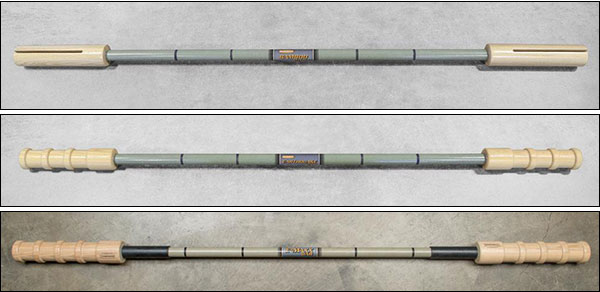
The original Bamboo Bar and Earthquake Bar are 80″ long, 6-pound barbells with 1.5″ shaft diameters. They both have 13″ sleeves, but the Earthquake has sleeves with three, 2″-wide safety slots for resistance bands, while the original Bamboo has the long horizontal slit in the sleeves. The Bamboo is more for light training and rehab it seems, while the Earthquake has more loading potential and makes a better strength training tool.
The E-Maxx SuperQuake is the Earthquake with even more loading capacity and more kinetic energy potential. It is 86.5″ in total length versus the 80″ length of the Earthquake. It has 16″ sleeves with four, 2″ band slots instead of being 13″ with three slots, and it’s a little heavier at 8.75 pounds (still pretty light though). The SuperQuake also has polymer bumpers added to the ends to help protect the bar shaft from unnecessary damage if ever it needs to be quickly (and forcefully) re-racked.
In my opinion the SuperQuake is all three of the bars in one. It can hold the most weight, offers the most kinetic energy potential, and can do everything that the original Bamboo bars can do in terms of rehab/prehab. I just don’t see situations where the SuperQuake isn’t the smarter buy, but maybe someone else knows a reason to own the Bamboo over the SuperQuake (comment if so, please.)
Recommended Accessories
You can pick up 41″ resistance bands almost anywhere. I use Rogue’s Monster Bands simply because I know they are reliable. Some of the other brands are probably just as good, but there are some cheap ones that are not. I just stick with what I know, but feel free to use your favorite vendor, of course.
You’ll probably want to go with the #1 Red and #2 Blue for most weights (or your brands equivalent). It also doesn’t hurt to have a pair of #3 Green if you intend to really load up the SuperQuake.
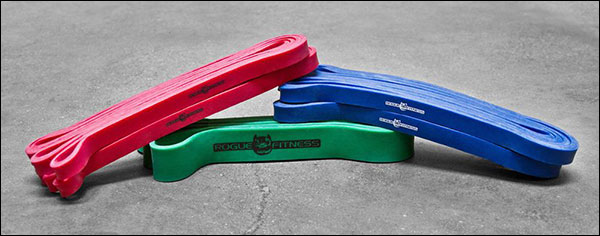
For the weights themselves, you can use your existing kettlebells (assuming you have pairs), Thompson Fatbells (again you’ll need pairs), or simply use your weight plates. Bumpers are not ideal as all weights are large diameter, but they can be made to work if you can’t afford to buy any of these other options right away.
The best case for plates is the smaller-diameter 25-pound cast iron or rubber coated plates. I use Vulcan’s new Quad-Grip Rubber Plates. I like them far more than using kettlebells because they are thinner, have multiple gaps for looping the straps through (I can vary the type of swing variation I get by using different holes), and they don’t make any noise when they hit neighboring weights. Once you get more than two kettlebells per sleeve, it’s just bang bang bang as they all smash into each other.
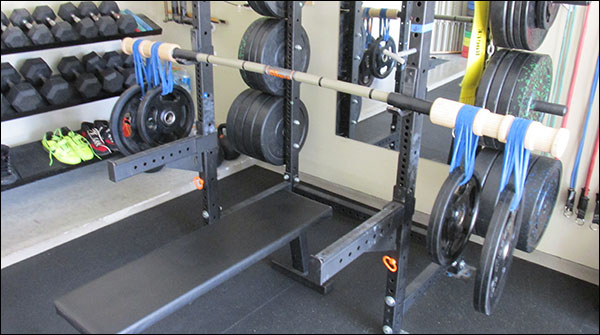
Other than bands and weights, you’re good to go. Though I do also suggest having spotters so that you don’t smash you face in if you lose control of the bar.
Summary – Benefits of the SuperQuake
- Excellent tool for shoulder rehab/prehab.
- Great form teaching tool – it rewards good form, and punishes sloppy form.
- Works the primary movers and stabilizer muscles while improving coordination, balance, and motor control.
- Great alternative to a steel bar for low weight, high rep sets – you’ll work more muscles and get a bigger pump.
- At heavier weights, this bar will absolutely build strength and improve your standard steel bar lifts.
- Very versatile – can be used for any linear barbell lift.
- All Bamboo Bar prices were lowered about 10% across the board recently.
- Mark Bell and Louie Simmons (among others) praise the Bandbell line for both rehab and strength training. I tend to think these guys know their stuff.
- Cheaper and less painful than shoulder surgery.
Summary – Drawbacks
- Fairly large investment – you need not only the bar, but also 4-6 resistance bands and just as many appropriate weights (kettlebells, steel plates, etc.)
- It’s kind of slow going to set up and break down for heavier lifts – a little more time consuming than simply sliding on plates like a standard bar.
- Doesn’t work as well with movements that typically need rotating sleeves, but I don’t think anyone wants to snatch a bamboo bar anyway.
- Tricky to first load. If you load even 20-pounds on one side with nothing on the other, you’ve created a trebuchet. Use a band peg above the light side to prevent accidents (see image below).
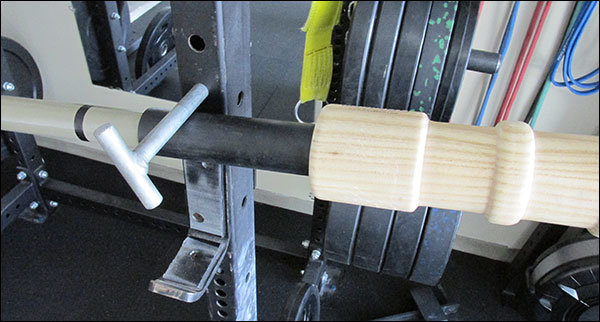
Summary – Actual Summary
Injury or not, I highly recommend the E-Maxx SuperQuake. What a great training tool! It’s super durable, versatile, and rewarding to train with… the results are 100% real. I like mine so much that I’m already eyeballing that Rhino Flex.
Miscellaneous Videos
Lot’s of other Bamboo Bar videos out there. Just search the ol’ YouTubes.

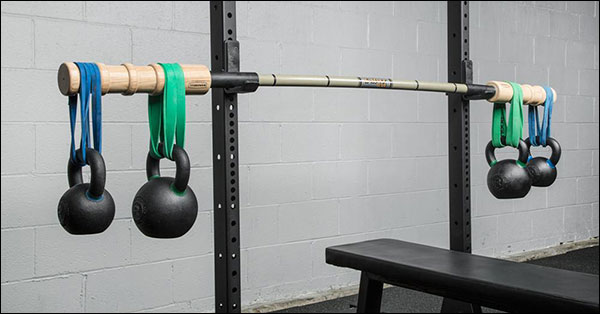
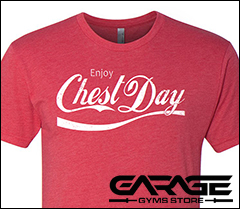
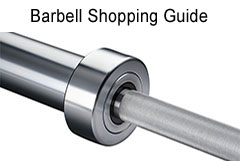
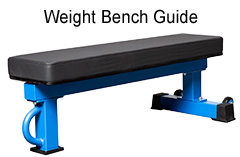
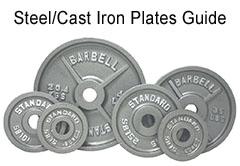
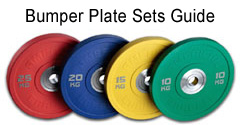
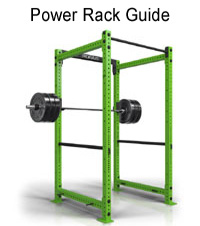
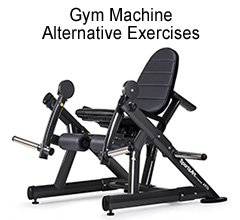

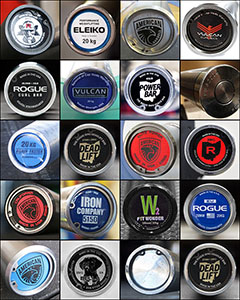

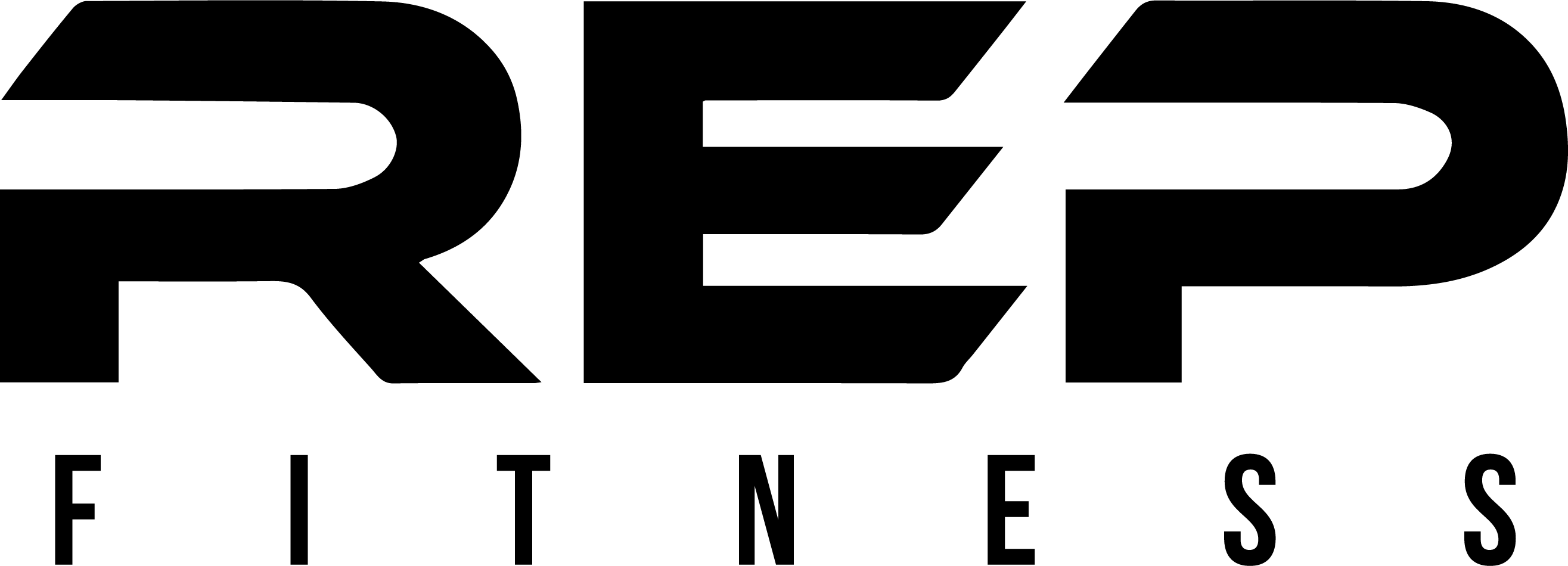
Thanks for the review. Is this a tool better used for intermediate/advanced lifters as an accessory lift to help drive progress on their main lifts or would you recommend a novice use it for prehab/form correction as well even if they are still making progress on a linear progression?
I’m also curious if you had to rank all different specialty bars how you would prioritize them? Currently happy with just my WOD barbell and (growing) collection of kettlebells but it’s always cool to map out the next purchases and phases of programming. It helps me stay motivated.
Good question. For prehab, I can see no reason why any lifter at any stage of training wouldn’t benefit from at least doing accessory work with an OKE bar, and that includes advanced lifters. Matter of fact, while researching this review I came across an interesting article written by a physical therapist. She said that over the years, she has noticed that the strongest lifters have the weakest stabilizers – the reasoning being that their primary movers were strong enough to do the job of the stabilizers (http://drsunderman.com/stabilizer-muscles/). I don’t know how accurately her patients reflect the masses, but it’s horrifying if that’s actually an issue (and I can’t think of a good reason why it can’t be possible.)
For driving progress on the main lifts, it’s probably more advantageous for intermediate/experienced lifters. I just don’t see a novice lifting a high enough percentage of their max on a Bamboo to make much difference. Great for form still, and prehab, but I say novices just need to follow that linear program and soak up those easy gains while they can.
If I ranked specialty bars at all, it would just be by usefulness and versatility, with minor consideration given to price. Whichever bar would create the most opportunity for improvement in ones program would be rest, yeah? For some people that’s a Swiss bar, others it could be this bamboo bar, and for most I think it seems to be a curl bar haha. I like my deadlift bar, my curl bar, and now this Quake.
John,
You can easily load the E-Maxx or any of the Bamboo bars by “off-setting” one end of the bar in the rack. Place the inside wooden part on the upright, then load that side by placing the band all the way in so the KB or plate can’t go any further. Load the other side, then bring the bar back to center position. Works every time with no crashes!
Thanks for another interesting review, John. I’ve watched these for a while but they’ve always seemed to be pretty badly overpriced, but now you’ve got me thinking again (always a dangerous prospect). You’ve also brought the Rhinoflex to my attention.
Seems to me the flex of the lighter bar will deliver the instability effect at lighter weights, and that you’d normally want to maximize that instability — so perhaps use the lightest bar for which your particular lift will not exceed the bar rating.
If it’s just acting as a stiff bar with rubber-dangled weights, maybe a regular bar with extra collars (for retaining several bands) or the collars that have loops on them would be about as good.
The Rhinoflex could also be used with those extra collars, so might be the most versatile of these — use either with plates or with collar and bands.
What do you think — now I’m eyeing a Rhinoflex.
Thank you. Yeah so, I still haven’t seen the Rhino. All I’ve heard about it from real people is that it is neat, and that’s it’s not the same as the Bamboo line in terms of the benefits it provides.
What I took away from that was that without the hanging weights, the effect on stabilizer muscles is much more in line with steel than with Bamboo. You bring up an interesting point though – what happens if you hang weights “bamboo style” from the Rhino. Do you now have a Bamboo bar & and Rhino Bar? Maybe. Probably even! I think it depends on the rigidity of the Rhino – is it more rigid than the other bars because it’s supposed to handle more weight? And even if it is, is it enough to prevent it from being a good Bamboo bar? very curious.
I’m not planning on buying two Bandbell bars back-to-back so I won’t have a Rhino anytime soon, but you have made me curious about that. I’ll keep my ears open!
Hi, JB. I was just re-reading your review on the E-Maxx bar and wondering if you still use it regularly (put another way, do you still believe in its benefits or has it been relegated to a novelty item)? And if you’re still regularly using, how’s it holding up? Many thanks! Paul
I do use it, but only for bench press these days. I found it to be really reaching to use it for squats, and I simply don’t like it for shoulders anymore. To be fair, my distaste for using it for shoulders has more to do with my inability to sort out why overhead presses cause me to need a neck adjustment at the chiropractor about once a month. If I ever sort that business out I’ll probably go back to pressing it overhead again.
I do believe it’s a good product, and I believe it does what it is intended to do, but I don’t think that most perfectly healthy lifters with good form need one (as in joint/tendon/rotator health). It’s a specialty bar much like a Swiss Bar or cambered bar. Does it help mix things up? Ya. Does it help build stronger rotator? Sure. Is it the only way? No.
The bar is in great shape though. It is a top-notch product and I see it lasting for a long, long time. I don’t regret buying it and yes it’s still being used, just not nearly as much as when it was new and exciting.
Thanks for the feedback, JB!
Hi, John,
Not really medical advice but if you soften and stretch scalenes and deltoids with pressure, then do very light overhead reps while keeping the ribcage down and not tightening the neck or letting the head go forward, you may be able to get some re-education going for the overhead press muscles. It may help to, after those reps, do some of the last “extra bit” of overhead push (where the ribs rise) so as to make the scalenes more conscious, which may translate into into leaving them more soft the next time.
Years back I turned my head to look at the J-cups while racking a heavy set. It knocked out one of the vertebrae in my cervical spine and I had to get it adjusted. Ever since that incident, I appear to be super prone to doing that again even though I’ve long ago since learned to keep my head fixed and neutral – not up, down, left or right. It only happens on heavier loads (even though they are still loads I can move). I switched from a standard overhead press (standing) to a seated press and had better luck avoiding that, but it still happened from time to time. Only a few months ago did I say f it and switched entirely to dumbbell presses. No bar, no Quake. I’ve not had an issue since doing that. I have reintroduced barbell presses, but very light by comparison (like 80 lbs versus the 225 I was strictly pressing before; just kind of as a re-learning accessory.)